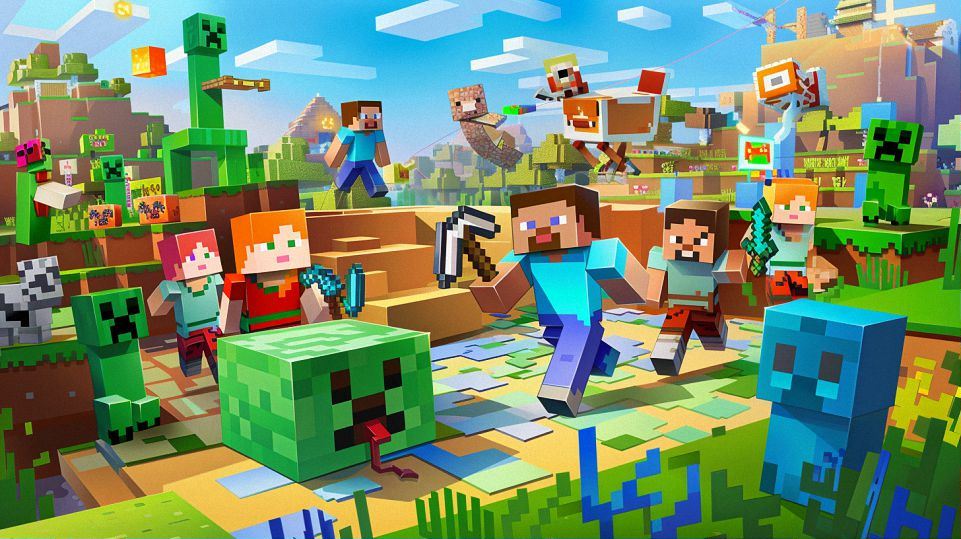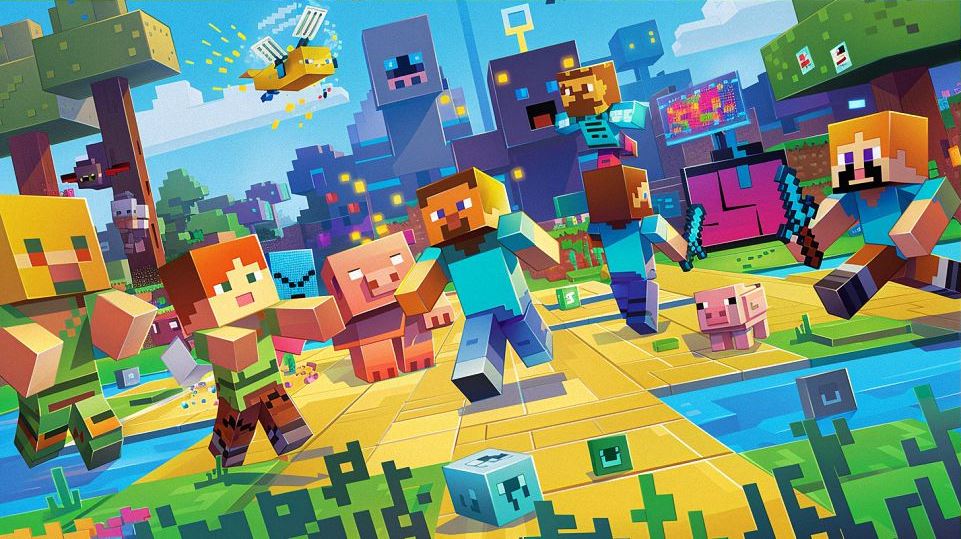Scratch in Minecraft: Unleash Your Creative Power


Getting Started with Minecraft Scratch
Understanding Minecraft Scratch Basics
Minecraft Scratch is an exciting blend of creativity and technology, where you can bring your imagination to life in a virtual world. Let’s dive into the basics to get you started on this thrilling journey:
Contents
Toggle-
What is Minecraft Scratch? Minecraft Scratch is a platform within Minecraft that allows you to create and program your own interactive stories, games, and animations using block-based coding.
-
How Does it Work? In Minecraft Scratch, you use visual programming blocks to give commands and create actions. It’s like building with virtual LEGO blocks but with the power to make things move, react, and come alive.
-
Why Learn Minecraft Scratch? Learning Minecraft Scratch not only enhances your creativity but also helps develop critical thinking, problem-solving, and coding skills in a fun and engaging way.
Setting Up Your Minecraft Scratch Environment
Now that you understand the basics, let’s set up your Minecraft Scratch environment for optimal creativity and enjoyment:
-
Accessing Minecraft Scratch: Launch Minecraft and navigate to the “Mods” section. Look for “Scratch” or “Scratch Mod” and install it to unlock the Scratch features.
-
Choosing Your Mode: Decide if you want to start with a blank canvas in Creative Mode or challenge yourself with coding tasks in Survival Mode. Each mode offers unique opportunities for creativity.
-
Customizing Your Workspace: Adjust your settings within Minecraft Scratch to suit your preferences. You can change the block colors, grid size, and other visual elements to make coding more intuitive.
Exploring the Tools and Interface
Now that you’re all set up, let’s explore the tools and interface of Minecraft Scratch:
-
Block Palette: The Block Palette contains all the coding blocks you’ll use to create your programs. From movement commands to event triggers, explore the variety of blocks available.
-
Stage Area: The Stage Area is where your creations come to life. Place characters, objects, and backgrounds onto the stage, and watch them interact based on your code.
-
Scripts and Code: Connect coding blocks together to form scripts. Experiment with loops, conditions, and variables to add complexity and functionality to your projects.
-
Testing and Debugging: Test your creations frequently to see how they behave. Debug any issues by checking your code for errors and making adjustments as needed.
By understanding these basics, setting up your environment, and exploring the tools and interface of Minecraft Scratch, you’re ready to embark on an exciting coding adventure in the world of Minecraft. Let your creativity flow and see what amazing creations you can build!

Creating Your First Project
Choosing a Theme or Idea
When embarking on your first project in Minecraft Scratch, the first step is to choose a captivating theme or idea that sparks your creativity. Here’s how to get started:
-
Brainstorming: Begin by brainstorming ideas. Think about your favorite stories, games, or movies. Do you want to recreate a scene from a beloved movie or design a game based on a fantasy world? Let your imagination run wild!
-
Interest Alignment: Consider your interests and hobbies. Are you passionate about space exploration, underwater adventures, or mythical creatures? Incorporating your interests into your project can make it more engaging and personal.
-
Audience Appeal: Think about your audience. Are you creating this project to share with friends, family, or online communities? Consider what would appeal to them and make your project stand out.
-
Challenge Yourself: Don’t be afraid to challenge yourself. If you’re new to coding, start with a simple idea and gradually add complexity as you gain confidence. Pushing your boundaries can lead to exciting discoveries.
Building Blocks and Characters in Minecraft Scratch
Once you have a theme or idea in mind, it’s time to bring it to life by building blocks and characters in Minecraft Scratch. Here’s how to get started with your creations:
-
Block Selection: Choose the appropriate blocks for your project. If you’re creating a medieval castle, use stone and wood blocks. For a futuristic city, opt for metal and glass blocks. The right blocks set the tone for your project.
-
Character Design: Design characters that fit your theme. Are they heroes, villains, or friendly NPCs (non-player characters)? Customize their appearance using different block textures and colors. Give them names and personalities to make them memorable.
-
Environment Creation: Build the environment around your characters. Whether it’s a bustling cityscape, a serene countryside, or a mysterious dungeon, use blocks creatively to craft your world. Add details like trees, buildings, and landmarks to enhance the atmosphere.
-
Interactive Elements: Make your project interactive by adding elements like doors, switches, and hidden treasures. Use coding blocks to create actions and events that players can interact with. The more interactive your project, the more immersive the experience.
Adding Interactivity and Motion
To take your project to the next level, focus on adding interactivity and motion. These elements bring your creations to life and engage players in exciting ways:
-
Coding Challenges: Experiment with coding blocks to add interactivity. Create challenges, puzzles, or quests that players must complete. Use conditions, loops, and variables to control game logic and progression.
-
Animation Techniques: Incorporate animation techniques to add motion to your characters and objects. Create walking animations, idle animations, or special effects like explosions and particle effects. Animation adds dynamism to your project.
-
Sound and Music: Don’t forget about sound and music. Use sound effects to enhance actions and events in your project. Add background music to set the mood and atmosphere. Sound and music create a multisensory experience for players.
-
Testing and Feedback: Test your project regularly and gather feedback from others. Playtest with friends or share your project online for community feedback. Use feedback to make improvements and refine your project further.
By choosing a theme or idea, building blocks and characters, and adding interactivity and motion, you’ll create a captivating and engaging project in Minecraft Scratch. Let your creativity shine and have fun bringing your ideas to life!

Advanced Techniques in Minecraft Scratch
Using Variables and Conditions for Dynamic Effects
In Minecraft Scratch, mastering variables and conditions opens a world of dynamic effects and interactions. Let’s delve into how these advanced techniques can elevate your projects:
-
Variables for Customization: Use variables to store and manipulate data dynamically. For instance, you can create a variable for a player’s health and adjust it based on in-game actions like taking damage or healing.
-
Conditions for Decision Making: Incorporate conditions to create decision-making logic. For example, if a player’s health drops below a certain threshold, trigger a warning message or change the game’s environment to reflect the danger.
-
Dynamic Effects with Variables: Combine variables and conditions to create dynamic effects. Imagine a weather system where variables control the intensity of rain or snow based on in-game conditions like time of day or player location.
Incorporating Sound and Music
Sound and music are powerful tools for enhancing immersion and atmosphere in Minecraft Scratch projects. Here’s how to effectively incorporate them:
-
Sound Effects: Use sound effects to provide auditory feedback for actions. For instance, a “coin collected” sound when a player picks up an item or a “door opening” sound when entering a new area adds depth to the gameplay experience.
-
Background Music: Choose background music that complements the theme and mood of your project. For a thrilling adventure, upbeat and adventurous music sets the tone, while serene melodies create a calming atmosphere for exploration.
-
Transitional Sounds: Implement transitional sounds to smooth transitions between scenes or events. Fade-in and fade-out effects for music and ambient sounds enhance the overall flow of your project.
Collaborating and Sharing Your Projects
Collaboration and sharing are integral to the Minecraft Scratch community. Here’s how you can collaborate with others and share your projects with the world:
-
Online Communities: Join online communities dedicated to Minecraft Scratch. Share your projects, get feedback, and collaborate with fellow creators. Platforms like Scratch.mit.edu offer a vibrant community for sharing and collaboration.
-
Version Control: Use version control tools to track changes and collaborate seamlessly. Platforms like GitHub provide version history, branching, and merging capabilities, ensuring smooth collaboration among team members.
-
Showcasing Your Work: Showcase your projects through online galleries, social media, or dedicated forums. Provide detailed descriptions, screenshots, and playable demos to engage and inspire others in the community.
By harnessing advanced techniques like variables and conditions, incorporating sound and music effectively, and actively collaborating and sharing your projects, you’ll elevate your Minecraft Scratch experience and contribute to a thriving creative community. Let your imagination soar and inspire others with your creations!


